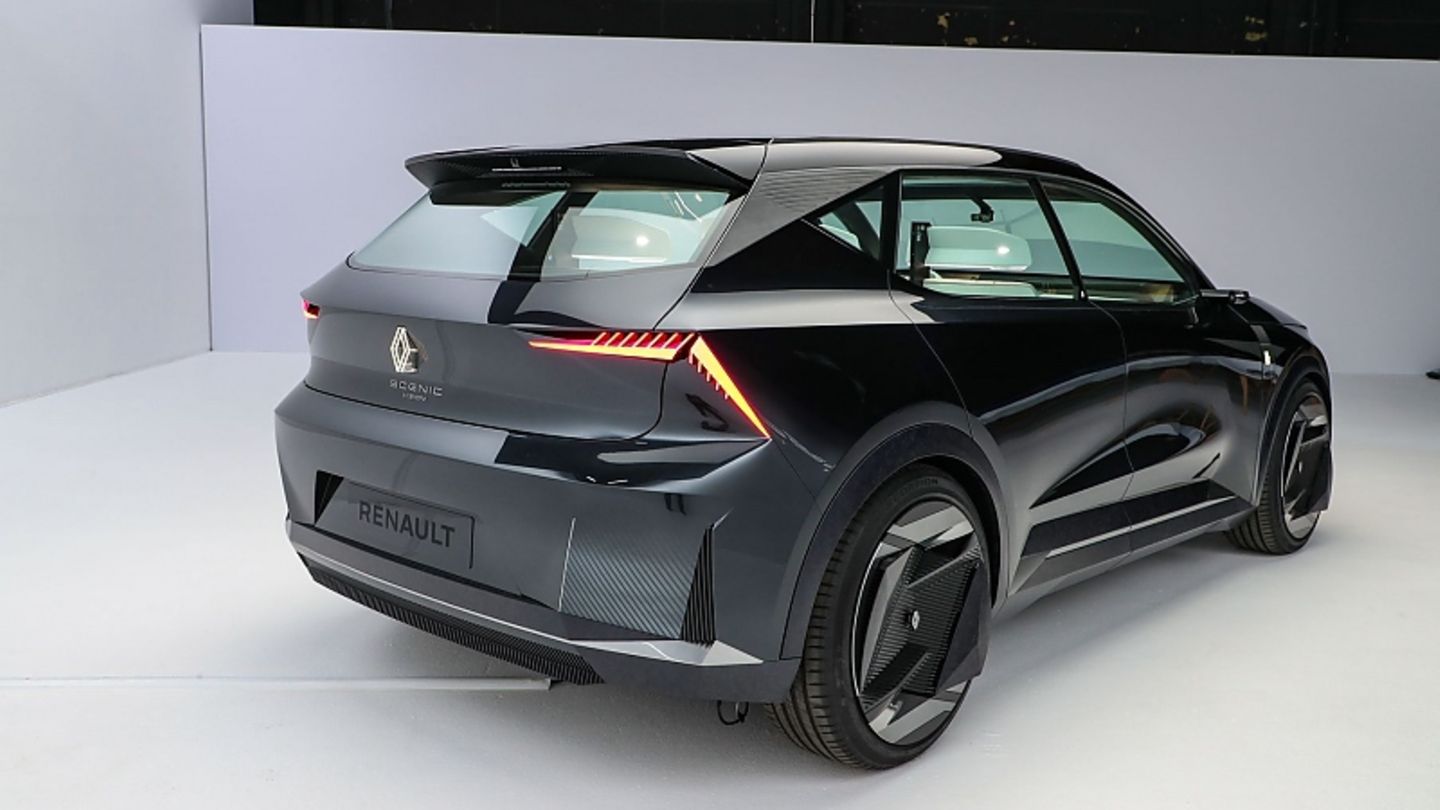The study of the Renault Scenic Vision is far more than a finger exercise by the designers. The concept car anticipates a new platform combining a fuel cell and battery-electric drive. The materials are a declaration of intent towards sustainability.
The Scenic name puts a smile on the face of older Renault fans. Because with the compact van of the same name, the French car manufacturer had the right nose in the mid-1990s by relying on a versatile compact van and thus becoming the pioneer of this segment in Europe. The new vehicle type was announced at the IAA 1991 with a concept vehicle. Exactly 30 years later, with the Scenic Vision, the French have once again pulled a study out of a hat whose name already obliges it to be innovative.
It all starts with the powertrain. It uses both hydrogen and a 15 kW fuel cell as well as a 40 kilowatt hour battery. With this combination, you can fill up with hydrogen if you want to go fast and far and charge electricity overnight. With the battery alone, there should be a range of more than 300 kilometers, but if you also use hydrogen as a drive source, you only have to make a five-minute refueling stop for a distance of around 800 kilometers. The 2.5-kilogram tank is located under the front hood, the 160 kW / 218 hp electric motor comes from the Megané E-Tech Electric and sits on the rear axle, which also drives the wheels. The fuel cell itself is installed behind the battery.
There are few surprises when it comes to the operating modes of the new hybrid. In everyday life and for shorter distances, the energy from the batteries alone is used for propulsion. As soon as you enter a long distance into the navigation device, the route planner calculates the use of the two power sources in such a way that you don’t have to charge the battery while driving, but only have to make a five-minute hydrogen refueling stop. The hydrogen range extender also fulfills another important task. In cold temperatures, the technology is used to preheat the batteries and thus increase their efficiency.
The Renault Scenic Vision is based on a prototype platform that is currently being developed and is tailored precisely to this dual drive concept. However, it will probably take a while before the architecture can go into series production. Especially since the combination of a battery-electric and hydrogen fuel cell drive is currently still very expensive. The optics are different. The exterior design of the compact crossover anticipates an electric car coming in 2024 and based on the CMF-EV platform. After all, the French carmaker wants to sell only purely electric cars in Europe by 2030.
Sustainability is a top priority for the French car manufacturer: the group wants to be CO2-neutral by 2040 in Europe and by 2050 worldwide. Accordingly, the Renault Scenic Vision consists of 95 percent recyclable materials, including the battery. The batteries of the concept vehicle are 60 percent decarbonized, which affects both the substances and the energy used in production. By 2030, the Renault Group is aiming for a 33 percent weight percentage of recycled materials in new vehicles. This is also reflected in the fabrics of the futuristically designed interior.
Source: Stern
I am a 24-year-old writer and journalist who has been working in the news industry for the past two years. I write primarily about market news, so if you’re looking for insights into what’s going on in the stock market or economic indicators, you’ve come to the right place. I also dabble in writing articles on lifestyle trends and pop culture news.




